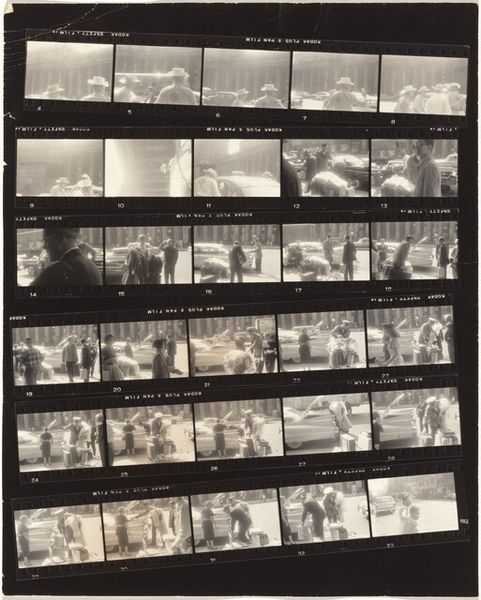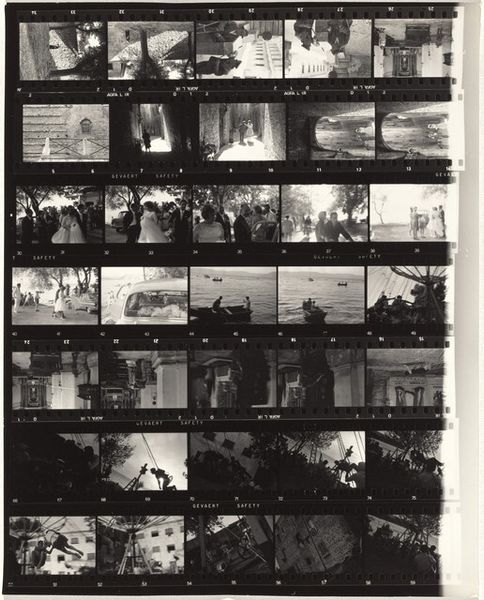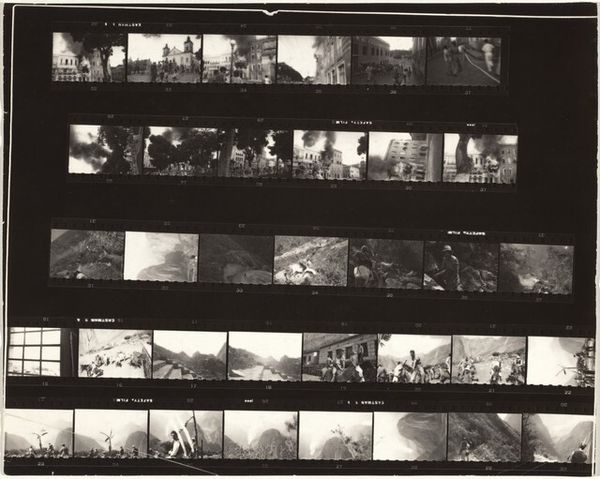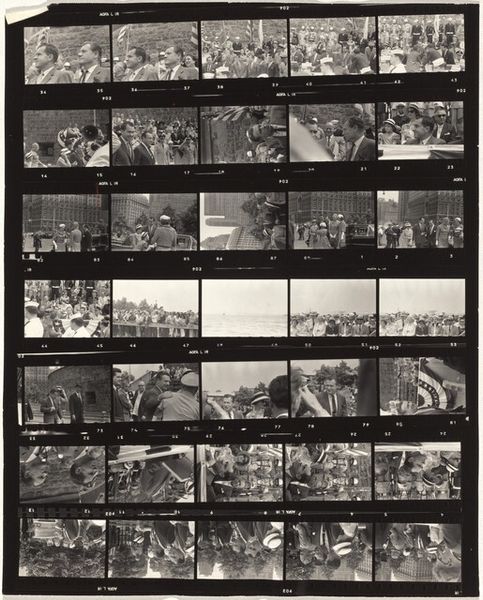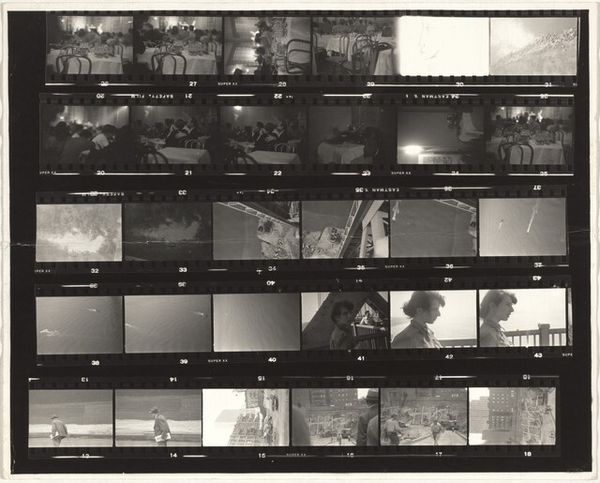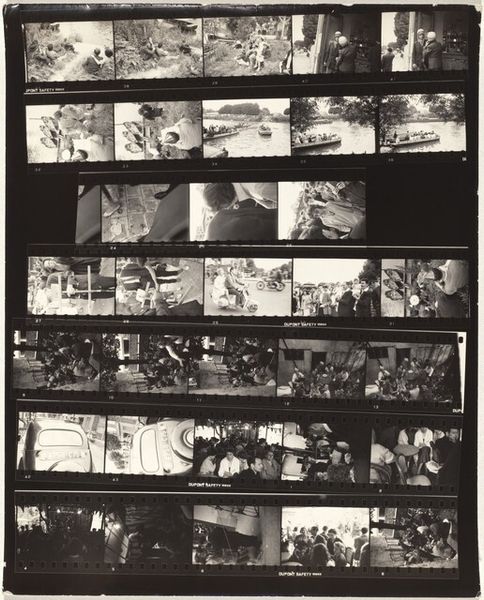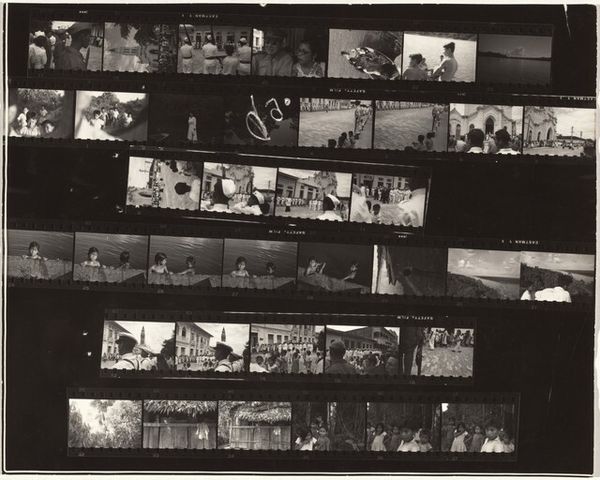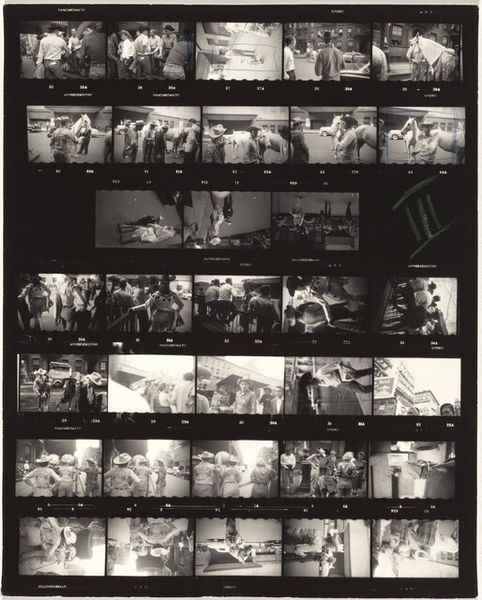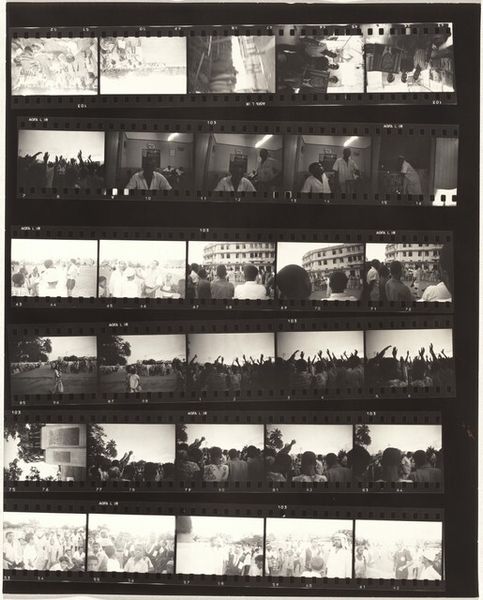
Dimensions: overall: 25.3 x 20.5 cm (9 15/16 x 8 1/16 in.)
Copyright: National Gallery of Art: CC0 1.0
Editor: This is Robert Frank's "Guggenheim 606--Cemetery, San Francisco" from around 1956. It's a gelatin silver print, presented as a full contact sheet. Looking at it, I'm struck by its melancholic mood—it feels almost like a visual poem about life and death in America. What feelings or ideas does it evoke in you? Curator: Robert Frank... he had a knack for seeing right through the shiny surface. This contact sheet isn’t just about a cemetery; it's about mortality, movement, and the ever-present hum of American life. Look at the way the frames alternate between intimate graves and the sprawling landscape, then cut to those mundane scenes of roads and cars. Frank's almost whispering, “Remember, even amongst the headstones, life charges on.” Editor: That contrast between the intimate and the expansive is really powerful. Were contact sheets always displayed like this? It feels so raw. Curator: Initially, contact sheets were work tools, never intended for display. But showing the process, the multiple angles, even the imperfections...it peels back the layers. Frank lets us into his thought process, the hunt for the "right" shot. It's less about a perfect image and more about capturing a fleeting truth. Editor: So it's like seeing the artist's mind at work? The decision making process… Curator: Exactly. He's not presenting a polished narrative, he is asking you to think. He wants you to ask why these frames, why this order? What story emerges from these seemingly random moments stitched together? Are you affected by its lack of a clearly presented "perfect" photo? Editor: Absolutely. I went from thinking it was a straightforward image of a cemetery to realizing it's a commentary on something much larger. Curator: That's the magic, isn't it? Frank invites us to be active viewers, to find our own meaning within the visual whispers of American existence, as pieced together by the artist's own journey through seeing it. And that’s how artists’ inner voice continues to call across eras and materials, in answer to us, ever questioning, across time.
Comments
No comments
Be the first to comment and join the conversation on the ultimate creative platform.
